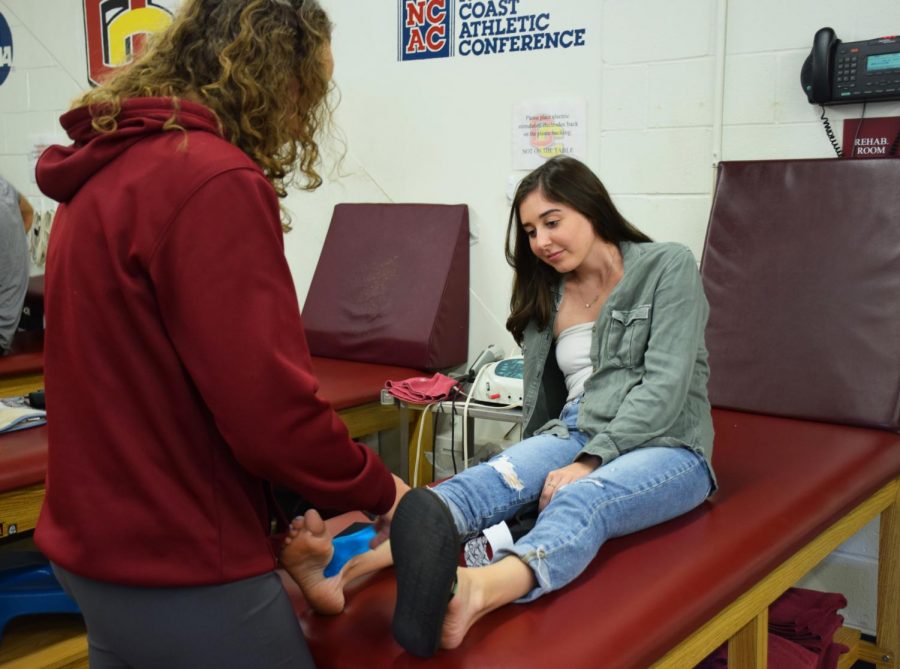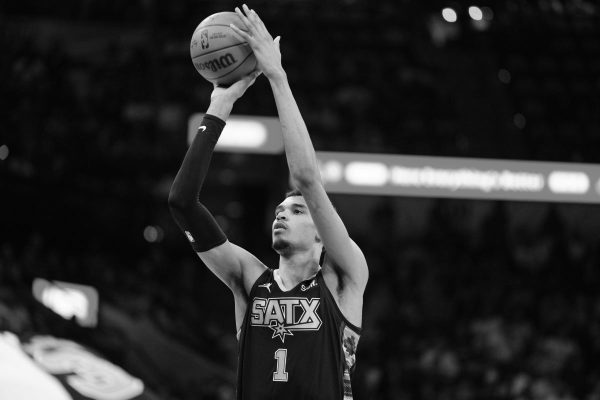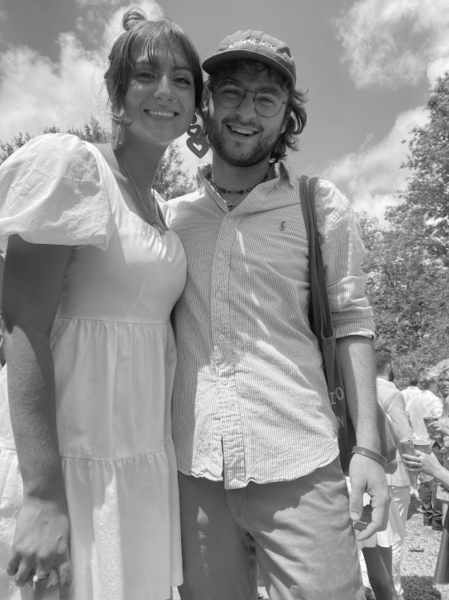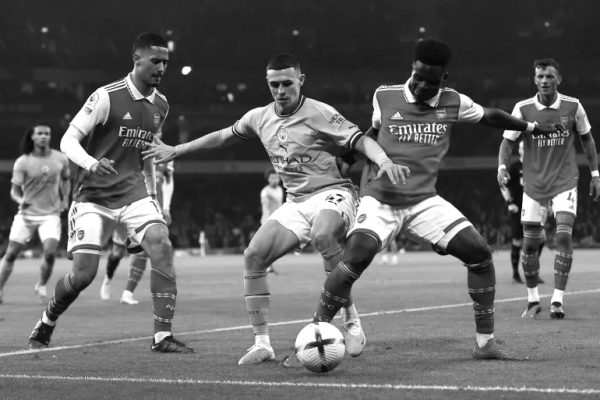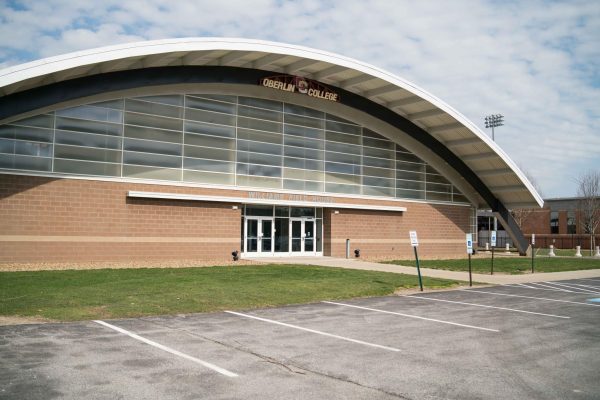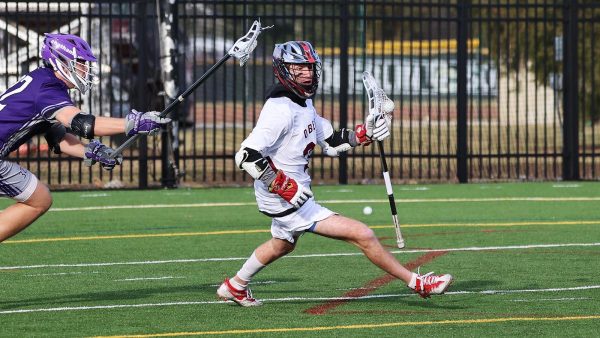Sports Medicine Center Supports Athletes
Photo by Mallika Pandey, Photo Editor
College third-year Tess Siciliano, women’s lacrosse player, gets her ankle rehabilitated.
You can find the Sports Medicine Center packed with varsity athletes preparing for practice at 4 p.m. on any weekday. Student-athletes use the facility daily to ensure stronger physical health. The Sports Medicine Center is located in Williams Field House and has space for taping, treatment, rehabilitation, and hydrotherapy, as well as a private physician’s exam room. The importance of physical health can be easily forgotten in the hustle and bustle of Oberlin’s academic environment. As a College athlete, I appreciate the Sports Medicine Center staff on Oberlin’s campus tremendously.
With so many teams that need their constant attention, we’re lucky to have four certified athletic trainers on staff who work hard to help student-athletes recover. This kind of close medical attention hasn’t always been provided for athletes. The American Medical Association didn’t recognize athletic trainers as legitimate medical professionals until June of 1990. By 1991, sports medicine had become an allied health profession, which has led to techno- logical developments to aid athlete treatment. Athletic trainers have to complete rigorous academic and clinical programs to understand a diverse range of physiologies and anatomies. The profession requires a bachelor’s degree as well as a board certification test. Soon, many athletic trainers will be required to have a master’s degree due to the growing interest in the profession.
At Oberlin, the Sports Medicine Center is in charge of caring for 21 varsity teams and 23 club teams. Director of Sports Medicine Jill Rondini oversees assistant athletic trainers Kayla Caruso, John Brutvan, and Christine Schwartz. Each train- er is assigned to varsity teams based on when each sport is in season. Established groups allow trainers to develop a relationship with teams and to help with long-term recovery for some athletes.
Caruso, for example, works with field hockey, volleyball, men’s tennis, women’s basketball, and women’s lacrosse.
“I know that every team has different personalities, and knowing players better helps in the healing process,” Caruso explained in an interview with the Review. “Along with working with different teams, an injury repeats itself and can happen in completely different manners. It makes it easier to relate to
whoever is in here by knowing a lot about one particular athlete.”
Dealing with injuries during college can be difficult. Many students lack the time and access to transportation to go to physical therapy or to get checked out by a hospital. Athletic trainers work long hours, and often work overtime to be present for evening games. Trainers must also be prepared to make split-second decisions when an athlete gets injured during a game.
“Clinical rotations have helped me react to in- juries during games,” Caruso said. “My tactic is to think of the player and relate to them during the injury. Almost every trainer, right before the game runs [through] what might happen. It’s up to us to use our best judgement.”
Student workers also can be found in the training room, filling water bottles and taping athletes. Their job requires them to watch games and practices, and to tend to injuries that may occur. When there is a home game, there is most likely a student worker standing behind the bench with the athletic trainers.
There are currently eight student-workers em- ployed in the training room. Josephine An, a women’s lacrosse player and College fourth-year, has worked at the Sports Medicine Center for the past three years.
“Working in the training room has been an overall pleasant experiment,” An said. “The job has allowed me to develop close relationships with the trainers and other athletes. It also gave me good insight [into] the work that the athletic trainers deal with throughout practices, games, and the duties in be- tween.”
Caruso also voiced support for student workers in the training room.
“It’s great to have student workers because, for those that want to go into Sports Medicine, it gives them hands-on experience and preparation for graduate school,” Caruso said.
With the spotlight on the varsity athletes them- selves, many might forget the hardworking team that keeps them healthy and able to play. The strong relationships fostered in the training room speak to the importance of sports medicine.
“I love my athletes and coaches at Oberlin,” Caruso said. “The relationship between the athletic trainers needs a candid camera — there’s so many great moments.”


